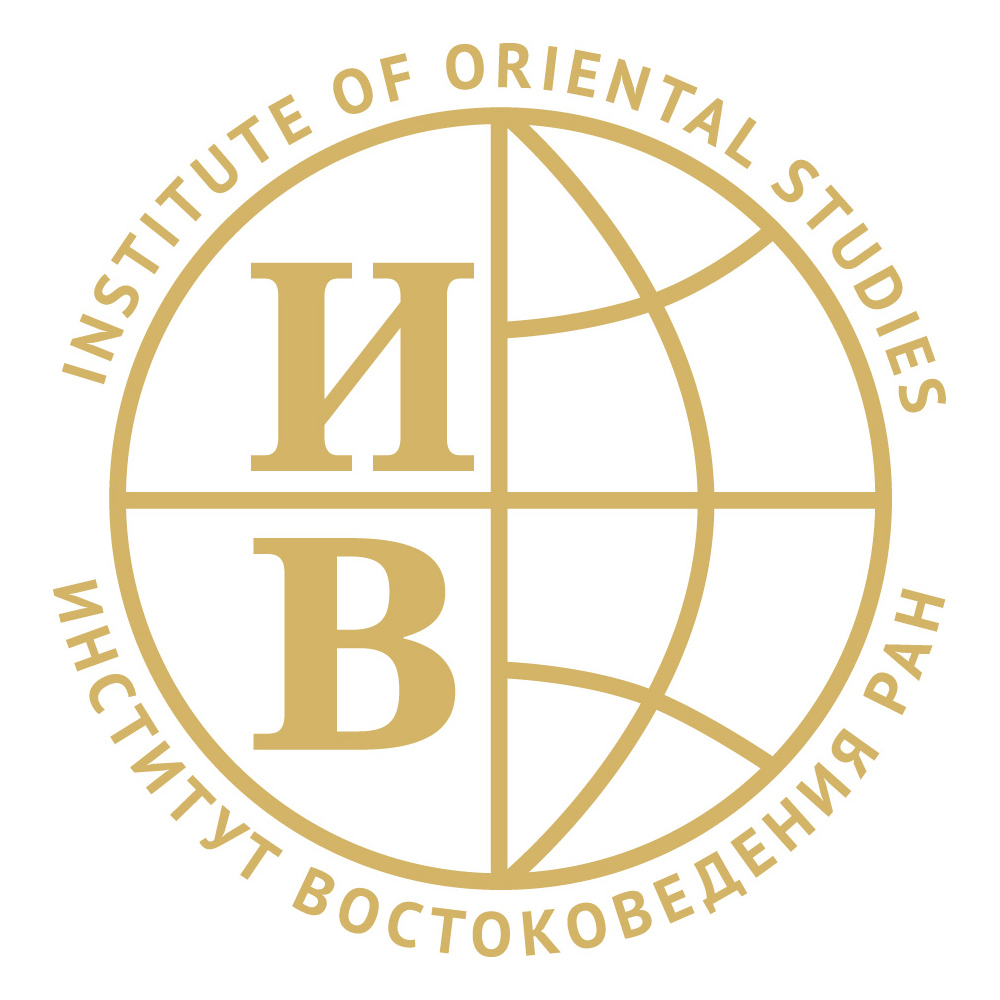Syrian Conflict Moves Closer an End
 Article by Shehab Al-Makahleh and Maria Dubovikova
Article by Shehab Al-Makahleh and Maria Dubovikova
Quiet meetings in Amman between the Syrian opposition and other parties are a step forward.
The Syrian conflict is moving closer to its end. Despite global expectations, the key settlement process is occurring on the ground and in closed talks, not in front of the media and, therefore, not manipulated by geopolitical players and games in Astana or Geneva. Such formats on the ground and in talks beyond closed doors prove to be more successful and fruitful than all the pomp covered by the media, which just recycles the message of “no outcome.” But through minor steps the greatest goals are achieved.
One of such talks was held recently in Jordan for three days between representatives of Syrian armed forces and officials from Jordan, the United States and Russia. The meetings discussed the logistics of the de-escalation zones in southwestern parts of Syria, and they demanded that Al Nusra fighters pull out from this area. This move would give the Syrian army and its allies, as well as Jordan and its allies, the impetus to control the eight-kilometer “pinnacle” that has been a thorny issue for the Syrian, Israeli and Jordanian armies.
The talks included 58 representatives of the Syrian rebel alliance, including the Free Syrian Army, who label themselves the “Southern Front.” The meeting also discussed moving some of these forces to Al Shaddadi Military Camp near Deir al-Zour in order to liberate it from the Islamic State (Daesh).
After the meeting with the Syrian opposition, Jordan has started to change its tone toward Syria and its regime. This fact can be inferred from the recent statements of Jordanian officials, stressing the kingdom’s great interest in southwestern Syria. Official statements on-record and off-record about the security and stability of this part of Syria show that the region is of strategic interest for Jordan and the whole Middle East — an implicit signal that there is no rejection of the current government or Syrian President Bashar al-Assad. A ceasefire control mechanism brokered by Russia, the US and Jordan in southwestern Syria is nearly ready, as Jordanian Minister of State for Media Affairs Mohammad Momani said following the Amman meeting on behalf of the Syrian opposition.
The Jordanians know very well that such phrases are aimed at approaching the nearest possible distance from the logic of the Syrian regime, which today prides itself with so many victories on the ground — recapturing many strategic locations that are deemed major victories, especially the “dubious melting away” of Daesh and the suspicious absence of other Islamic factions such as Al Nusra, which are supported by regional powers. The recent breakdown of many factions has led the Syrian armed forces to gain the momentum and to spread its troops into many parts of Syria, with the aim of liberating the whole country before the end of the year.
Assad has refused to demarcate the southern border by delineating an area of eight kilometers in southern Syria that would secure Jordan and Israel as well near the Nasseeb border crossing point. In other words, the Syrian president rejected the opening of the crossing point that would serve both Jordan and Syria. However, with Eid Al Adha approaching, the opening of the border indicates a gateway for cooperation, according to sources close to the president.
RUSSIA, TURKEY AND ISRAEL
More importantly, Jordan is investing its relatively “sophisticated communications” with Russia. In a closed-door meeting at the royal palace a few days ago, discussion about President Vladimir Putin described the Russian leader as a “trusted friend” and a “credible man.” Until now, Jordan has tried to reopen the Nasseeb crossing point, but President Assad has been “dodging” the issue for the past few months. With the agreement, Russia provided an opening for the Syrian leader to voice willingness to reopen the crossing point under certain security arrangements that will guarantee the eight kilometers. The whole area that will be the demilitarized zone in southern Jordan will include a 30-kilometer-wide strip in Syria running parallel to the Jordanian border.
Simultaneously, the Jordanian government held talks to reopen the Turaibeel crossing point between Jordan and Iraq. Turaibeel was closed after Daesh emerged in the eastern region of Iraq but now it is open, according to Jordanian officials. This fact is confirmed by Iraqi sources who said there are joint security and military operations nearby the Jordanian and Iraqi borders. Private meetings helped to set the stage for the Turaibeel reopening where cooperation is essential. The Jordanian official spokesperson confirmed the talks publicly a few days ago with regard to the reopening of the Turaibeel crossing point.
Jordan is also focusing on Turkey’s recent public position that a “terrorist group” should not be allowed to have a base in northern Syria, as this factor would threaten other safe or de-escalation zones in the country. The Jordanians now strongly believe that Amman has great interest in Syrian unity, and they pin high hopes on the tripartite deal with the Americans and Russians for a “long-term ceasefire” in southern Syria.
The tripartite deal has neutralized Israel as this agreement serves Israeli security as well; yet Israel is pushed away from the Syrian battleground and any Israeli intervention in Syria remains a constant possibility. However, there are multiple hidden indicators that determine the mechanism of monitoring the ceasefire, which will be announced in its final stages very soon as the Syrian predicament is reaching its finale.
Amman is struggling behind the scenes to put in place a mechanism that would be mandatory for all parties concerned to adhere to for a Syrian truce. The Americans believe the truce will eventually lead to the formation of a “Daraa region” within a Syrian federal system that will determine matters in the future Syria. The so-called long truce is called “a wide, low-tension zone” by the Russians.
At present, the Syrian government sounds very “cooperative” and in line with Russian demands. Recent battlefield successes mean the Syrians are keen not to waste the army’s efforts, and they want to strongly invest manpower into rebuilding Syria and to avoid military attrition in southern regions of the country, instead focusing on a magnet for Daesh: Deir al-Zour.
Overall, Jordan seeks to stabilize Syria now and supports the de-escalation zones scenario not only in order for the region to prepare for the return of Syrian refugees to their homeland, but also to ensure Jordan’s share and role in any future regional and international arrangement in Syria’s south.
Jordanians believe they have the “winning card” as the closest and most connected to the bloc of Daraa tribes and to Druze tribes in Jabal Al Arab of northern Jordan. While it is possible to discern “differences” that must be monitored between all parties in any private and quiet arrangements in southern Syria, Jordan’s focus on a “ceasefire monitoring mechanism” is a realpolitik solution to secure the best possible military — and then political — truce by the borders of the Hashemite Kingdom.
Article published in Fair Observer: https://www.fairobserver.com/region/middle_east_north_africa/syria-bashar-al-assad-jordan-russia-iraq-middle-east-news-01214/
Photo Credit: OBJM / Shutterstock.com
The “Southern Deal” Between Moscow and Washington: A Duel of Diplomacies
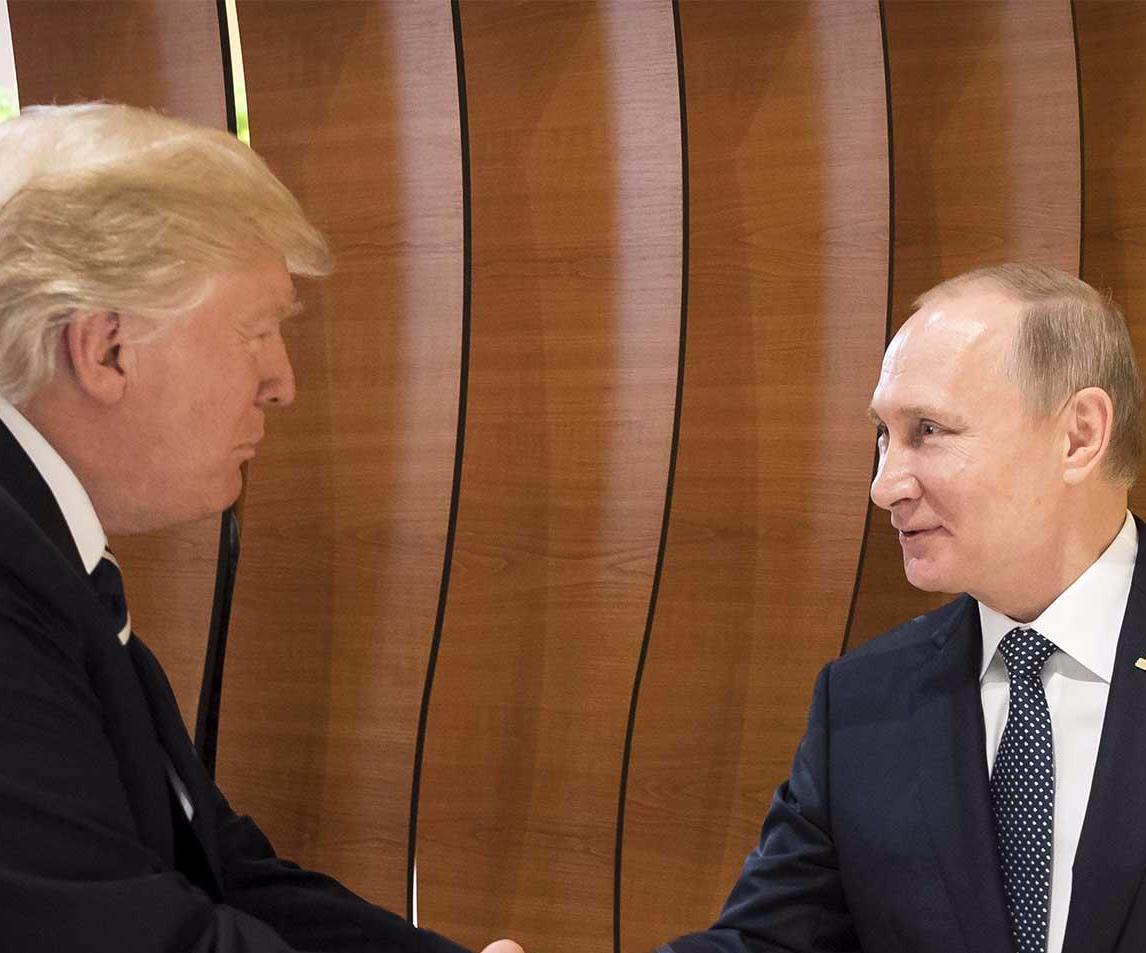 The main result of the meeting between Russian President Vladimir Putin and his American counterpart, Donald Trump, on the sidelines of the G20 summit in Hamburg on 7 July 2017 was a ceasefire agreement for a de-escalation zone in the governorates of Daraa, Quneitra and As-Suwayda in southwest Syria and on setting up a ceasefire monitoring center in Amman.
The main result of the meeting between Russian President Vladimir Putin and his American counterpart, Donald Trump, on the sidelines of the G20 summit in Hamburg on 7 July 2017 was a ceasefire agreement for a de-escalation zone in the governorates of Daraa, Quneitra and As-Suwayda in southwest Syria and on setting up a ceasefire monitoring center in Amman.
The United State's involvement in the multilateral Syrian settlement format marks an important new milestone in this process. American, Jordanian and, unofficially, Israeli participation in the settlement process allows for inclusion in the negotiations of the American-aligned Syrian Democratic Forces (SDF) and groups of the Free Syrian Army (FSA) in As-Suweyda and the Syrian Desert, as well as pro-Jordanian factions on the Southern Front, which refused to send their delegations to the fifth round of the Astana process. This achievement could potentially help preserve Syria's territorial integrity and include in the peace process all Syrian forces that are inclined to engage with other states diplomatically, and the territories they control, without any exceptions.
It should be noted that reports about a certain planned de-escalation zone with US participation in the south of Syria surfaced long before the meeting between the Russian and American presidents. For example, on 6 June 2017, commenting on the airstrike on a convoy of Syrian government forces travelling towards the Al Tanf border crossing, the Pentagon noted that the pro-government forces had entered a “coordinated de-escalation zone”. Simultaneously, reports started coming in (at that time still without official confirmation) about Russian-US consultations in Amman on one or several de-escalation zones. At the same time, experts began questioning the compatibility of the possible agreement for southern Syria with the memorandum passed in Astana in May. Even after the official rollout of the zone on the sidelines of the G20 summit and after the ceasefire came into effect on 9 July, these questions have not yet been fully answered.
Scenario one
The United State's involvement in the multilateral Syrian settlement format marks an important new milestone in this process.
The United States and Russia expand the southern de-escalation zone originally agreed upon in Astana to cover the As-Suwayda Governorate and also, unofficially, the opposition enclave in Eastern Qalamoun and territories in the Syrian Desert, including those around the population centre of Al-Tanf, which accommodates detachments of the local Sunni tribes from Revolution Commando, supported by American, British, Norwegian and Jordanian special operations forces. At the same time, Washington and Amman will not be promoted to full members of the Astana format and guarantor countries. Iran and Turkey, for their part, will retain their status as guarantor countries in this southern zone, in accordance with the Astana agreements.
The newly included territories are not mentioned in the Astana memorandum on de-escalation zones but let us not forget that reports from those areas have repeatedly caused public repercussions in the past. To begin with, the United States decided against raising the level of confrontation in the east by attacking the pro-government forces that, instead of advancing in the direction of the pro-US units, formally announced their intention to fight against the Islamic State (while, on the other hand, creating a “Shiite corridor” into Iraq). Also, in parallel with these incidents, unofficial talks in Amman continued. Furthermore, it appears that the parties were interested in what such an agreement has to offer.
Scenario two
The United States and Russia officially expanded the southern de-escalation zone identified in Astana by involving external players that are instumental in Syria's southern regions, namely Jordan and, informally, Israel. If were to happen, then Washington and possibly Amman would effectively become full participants in the Astana talks. Such a development could be regarded as an undoubted success of both Russian and American diplomacy: Moscow made Washington shoulder the responsibility for the actions of the Syrian opposition, while Washington, for its part, forced Moscow to influence Damascus and Iran, which is an extremely difficult task. The Russian media prefer not to mention it, but it is in the best interests of the Al-Assad government and the Iranians, whose clout in Syria depends directly on survival of the current Syrian regime, to discredit the entire opposition without exception.
Scenario three
What the United States and Russia did was “reset” the format of the southern de-escalation zone as defined in Astana. In particular, this is the scenario at which Associated Press sources hinted when saying that the current agreement between the United States and Russia has nothing to do with the Astana memorandum.
It is possible that, following the creation of the southern de-escalation zones and the security zone, with the USA among the guarantor nations, creation of similar de-escalation zones elsewhere in Syria will be discussed or is, indeed, already being discussed.
Since February 2017, pro-government forces have been conducting active operations in the governorates of Daraa and Quneitra not just against Tahrir al Sham, but also against the aforementioned Southern Front coalition of FSA groups, which enjoys the support of Jordan's Military Operations Center. Following the inclusion of these governorates in the de-escalation zones identified by the Astana memorandum, there was no cessation of hostilities as there were in other regions incorporated into the ceasefire agreement. In other words, there has been no actual de-escalation in those provinces, so the format of a “zone” including them has been declared untenable. This third scenario appears to be the most probable. It also opens up additional opportunities for replicating such zones in other Syrian regions. It is possible that, following the creation of the southern de-escalation zones and the security zone (the latter implies a certain buffer separating the opposition from the pro-government forces), with the USA among the guarantor nations, creation of similar de-escalation zones elsewhere in Syria will be discussed or is, indeed, already being discussed. This possibility has been voiced by certain US experts.
Tehran is concerned about the Amman consultations, fearing that the Jordanian negotiating format should gradually begin to replace the Astana process.
As mentioned above, it would be logical to set up such zones in the north/northeast of Syria, on the territories controlled by the SDF. Long-term US military presence has already been secured in those parts in the form of a network of US military bases. In addition, despite the fierce resistance on the part of the Islamic State, the fate of that movement's informal capital city Raqqa is all but sealed.
Therefore, the talk concerns the need for proactive measures aimed at configuring security zones in the northeast of Syria, with delimitation boundaries drawn beforehand for the Al-Assad and SDF forces advancing on the Islamic State from opposite directions. This would help avoid incidents and armed clashes. The Ankara factor is also important here: Turkey's position is understood to be aimed exclusively against any legalization of the SDF alliance, which Ankara perceives as a cover for the Kurdistan Workers' Party.
Iran's position
The greatest problems with implementing any scenarios involving the United States in the Syrian settlement could come – indeed, have apparently long been coming – from Iran, and from the part of the Syrian leadership in Damascus which relies on that country.
Tehran is known to have stated in the past that it opposes both the United States’ participation in the Astana talksand an American presence in any of the de-escalation zones. Washington's current stance with regard to Tehran similarly rules out any interaction with Iran and its allies (for the exception of Iraq) in regards to the Syrian settlement. This makes a situation when representatives of the two countries would sit down at the negotiation table as equal partners virtually impossible. During the first round of the Astana talks, while giving an overall positive appraisal of the format, the American Department of State expressed its bewilderment at Iran's participation.
According to some reports, the United States and Jordan insist on all pro-Iranian Shiite forces being pulled out from those regions in southern Syria, which are planned to become part of the de-escalation zone. Israel supports this position: Tel Aviv has repeatedly delivered strikes in the past on Shiite forces supporting Al-Assad in southern Syria. Sources point out that Tehran is concerned about the Amman consultations, fearing that the Jordanian negotiating format should gradually begin to replace the Astana process. Iran appears to be particularly worried that the current list of guarantor countries in the Syrian settlement process could begin to change over time, with Tehran being driven out of the country. On the other hand, since the beginning of Syrian warfare Tehran has set up multi-layered presence in the country: it relies not only on the numerous Shiite multinational communities and Islamic Revolutionary Guard Corps specialists, but also on the local National Defense Forces and the unofficial units of the Syrian Hezbollah chapter.
Russia could be accused of aiming all its reconciliation initiatives as a smokescreen in support of the revanchist sentiments harbored by Iran and by the “party of war” in Damascus.
Tehran, therefore, is apparently demonstrating its unwillingness to recognize any agreements regarding Syria to be concluded without its participation. Washington and the Gulf countries had anticipated such behaviour from Iran and the groups it controls. For Moscow, this development is fraught with complications. Russia could be accused of aiming all its reconciliation initiatives as a smokescreen in support of the revanchist sentiments harbored by Iran and by the “party of war” in Damascus. The implications of such an accusation cannot be ignored.
Despite the fact that the agreement between the United States and Russia officially came into being on 9 July, there is so far no clarity as to what it actually entails. There remain questions as to how the ceasefire in the south of Syria will be monitored, what the parties' positions are on Iran's involvement, and how the fight on the radicals will be carried out in a way that would not affect the “healthy” part of the opposition. Hypothetically, under a sustained ceasefire the opposition itself would be prepared to fight terrorist units. The main thing is for all the parties to strive for a sustained ceasefire regime and for a peaceful settlement of the conflict. For as long as such uncertainties exist, the ceasefire will continue to be violated.
Article by Anton Mardasov and Kirill Semenov
Article published in RIAC: http://russiancouncil.ru/en/analytics-and-comments/analytics/the-southern-deal-between-moscow-and-washington-a-duel-of-diplomacies/
Photo credit: picture alliance
The Kremlin’s contradictory behavior in Syria
 The Kremlin is seeking to flesh out the idea of creating four de-escalation ("safe") zones in western war-torn Syria while trying to help President Bashar al-Assad regain control of lost territories in the east. When it comes to the west, Moscow is talking about the de facto end of the civil war and aims to covertly weaken the Syrian opposition. As for eastern Syria, Russia is trying hard, though discreetly, to distance itself from the US-Iranian confrontation and preserve communication channels with Washington. It is also advocating decreasing the influence of both the United States and Kurds and urging pro-Kremlin oligarchs to help fix the economy.
The Kremlin is seeking to flesh out the idea of creating four de-escalation ("safe") zones in western war-torn Syria while trying to help President Bashar al-Assad regain control of lost territories in the east. When it comes to the west, Moscow is talking about the de facto end of the civil war and aims to covertly weaken the Syrian opposition. As for eastern Syria, Russia is trying hard, though discreetly, to distance itself from the US-Iranian confrontation and preserve communication channels with Washington. It is also advocating decreasing the influence of both the United States and Kurds and urging pro-Kremlin oligarchs to help fix the economy.
Russia's policy in Syria seems successful, and that appearance is meant to impress the Russian population ahead of the 2018 presidential election. In reality, however, Moscow is confronted with a range of problems as it proceeds with its purely tactical plans. Syrian government troops continue fighting in Daraa province, and the Southern Front — the rebel alliance that until recently had hardly opposed the regime — boycotted the fifth round of negotiations in Astana, Kazakhstan, which resumed July 4.
Some Russian analysts, referencing their sources in the Ministry of Foreign Affairs and Ministry of Defense, argue that Russian military and political leaders are well aware that Iran and Assad intend to prevent the UN's peace plan from succeeding. (The UN Security Council unanimously adopted the plan, Resolution 2254, in late 2015.) The analysts worry that Tehran and Damascus might try to convince Moscow to not cooperate as well.
Russia openly stands by its allies. For instance, to justify the Syrian government’s blocking of Tabqa, Moscow went so far as to accuse the United States and the Kurds allied with the Syrian Democratic Forces (SDF) of colluding with the Islamic State (IS). Moreover, Russia has warned that it will target US planes flying west of the Euphrates — though US aircraft hardly ever operate there anyway.
One of the weakest points of Russia’s de-escalation zone plan is the problem of how to fight radical forces if Assad would have to launch an offensive through territory controlled by moderate opposition, given that Assad and moderates have signed a truce. The exacerbation of relations between the Kurds and Assad’s forces will give Turkey more leeway regarding Idlib, positioned deep in enclaves controlled by the radical opposition alliance Hayat Tahrir al-Sham (HTS). Yet such exacerbation would discourage new players from engaging in the peace settlement, which the Kremlin would have welcomed.
Turkey is dissatisfied with the outcome of Operation Euphrates Shield. Ankara was only able to secure an area of 2,015 square kilometers (778 square miles) in northern Aleppo — half the planned area of 5,000 square kilometers (1,931 square miles). The operation also failed to dissuade the new US administration from relying on the Kurdish People's Protection Units (YPG) during the storming of Raqqa. During the Astana talks, Ankara insisted on extending the northern de-escalation zone not only to Idlib province, but also to the adjacent, opposition-held territories in Latakia, Aleppo and Hama. Turkey sees these territories as areas of its potential influence, given that local populations and moderate militant groups there are cooperating with the Turks.
A source close to Russian intelligence services told Al-Monitor on condition of anonymity that Moscow has considered two options for Idlib. The first was to back the advancement of pro-Assad forces, which would inevitably trigger escalation, drag Russia further into the Syrian conflict, and affect its foreign policy, economy and internal security. The second option implies close cooperation with Turkey. Ankara is reluctant to welcome new Syrian refugees to its territory, still, it is ready to send its special forces to support the "moderate" rebel groups against HTS in exchange for concessions related to Syrian Kurds.
In Syria's east, the race to maximize territorial gains creates favorable conditions between Damascus and Ankara. Both have difficult relations with the Kurds and could find common ground by cooperating against them.
After the US downing of the Su-22 that allegedly attacked the SDF, the al-Muatasim Brigade — a faction of the Turkey-supported Free Syrian Army, — withdrew from talks with the SDF about al-Muatasim taking over control of 11 villages from the Kurds. Moreover, Assad's troops closed off the Aleppo-Afrin road, while Turkey started redeploying its troops and equipment south and west of Azaz for an offensive against the Kurdistan Workers Party (PKK) in Tell Rifaat and Afrin.
A source in the Russian Defense Ministry confirmed for Al-Monitor that Moscow and Ankara have coordinated a joint offensive designed to allow Turkey to achieve two goals: weaken the US-supported, Kurdish nationalist Democratic Union Party (PYD), an offshoot of the Kurdistan PKK; and gain a sufficient foothold for further peacekeeping activities against HTS, which isn't a party to the truce.
“The preliminary agreement implies that a small group of Russian military advisers will stay in Afrin to act as an intermediary between the Kurds and Assad. In its turn, Turkey will gain control of the sites it deems vital,” the source said.
However, it was uncertain whether the agreement addressed 41 PYD/PKK facilities in northern Aleppo province and provided for a corridor from Azaz to Idlib. A corridor would link Turkey's zone of influence north of Aleppo with opposition enclaves in Idlib, which could weaken the Kurds and make them more cooperative with Russia and Assad.
"Moscow is keen to secure Kurdish loyalty to Damascus, and in a way would want to punish Kurds for prioritizing relations with the US over dealings with Syrian and Russian military. But it equally opposes fighting across the entire Afrin canton," the source added.
Ankara is aiming to control only the eastern and southern parts of Afrin canton, to link Idlib with the area recovered during Operation Euphrates Shield. However, the Kurds say Turkey wants to control all of the Afrin canton. If they halt the offensive on the IS stronghold of Raqqa to shift troops to Afrin, that action "could bring about heavy civilian casualties and trigger a tough US response,” the source said.
In theory, Turkish troops can't join the operation against the HTS if they are deployed in the safety zone in Idlib. If they were stretched thin trying to do both, the troops would be easy prey for radical groups. Al-Monitor sources in Turkey close to military officials say Ankara is considering establishing several military facilities in Idlib. Turkey would be backed by the opposition troops that previously engaged in Operation Euphrates Shield.
A joint Turkish-Russian military group reportedly has deployed to Sheikh Barakat Mountain on the border of Idlib province. Turkish troops may access Idlib from two areas — either from the border village of Atma to the town of Darat Izza and Sheikh Barakat Mountain west of Aleppo, or through Salqin and Harem. Moscow has no choice but to rely on Turkey in terms of separating opposition groups, which may presuppose the military crackdown on notorious jihadists, as well as lure some non-al-Qaeda groups to join Ahrar al-Sham. Such attempts have been made already, and as the pressure over the HTS continues, some of its fighters may want to join other “moderate” groups.
However, such complicated scenarios — currently, diverse HTS units control about 80 out of 156 local councils in Idlib — with an ill-conceived cease-fire mechanism undermine Moscow’s peacekeeping efforts to involve its closest allies from among post-Soviet states: Kazakhstan and Kyrgyzstan.
On June 22, Vladimir Shamanov, the head of Russia's State Duma Defense Committee, said proposals were being worked out for Kazakhstan and Kyrgyzstan, Russia’s allies in the Collective Security Treaty Organization (CSTO), to join the military campaign in Syria. The next day, authorities of both states denied reports about the negotiations. A similar proposal was made to Armenia, whose security forces have long conducted undercover operations in Syria to protect Armenian ethnic enclaves. The Armenian forces accumulated considerable experience in peacekeeping in Iraq, Kosovo, Afghanistan and Lebanon. “Kazakhstan’s peacekeeping battalion took part in minesweeping in Iraq. Even though Astana has used a multifaceted approach and spared no effort to be perceived as a reliable mediator, it can be forced to deploy a small military contingent. Kyrgyzstan can be compelled to follow suit, as Russia has recently written off [Kyrgystan's] new debts,” an official from the Russian military-industrial complex told Al-Monitor.
In sum, it’s possible that if there's a flare-up between the Kurds and Damascus, Turkey may make the most of the situation and take its own actions, reneging on its agreements with Moscow. In turn, Russia may convince CSTO allies of the need to send troops to Syria — even though it won’t be easy.
That said, however, Russia’s position on the Kurds isn’t linear. Moscow doesn’t strictly oppose a Turkish operation as Turkey's way to make the Kurds pay for their dealings with Washington. Yet the presence of Russian forces in Afrin is still supposed to be a formal demonstration of defending the Kurds, even though the Russian forces won’t hamper Turkey’s offensive. However, there’s a serious risk that outside interference into Idlib will create new alliances in the opposition, not their separation into “moderate” and “radical” factions.
Article published in Al Monitor: http://www.al-monitor.com/pulse/originals/2017/07/russia-behavior-syria-turkey-idlib-military-base.html
Photo credit: REUTERS/Omar Sanadiki
G20 comes with a breakthrough on Syria
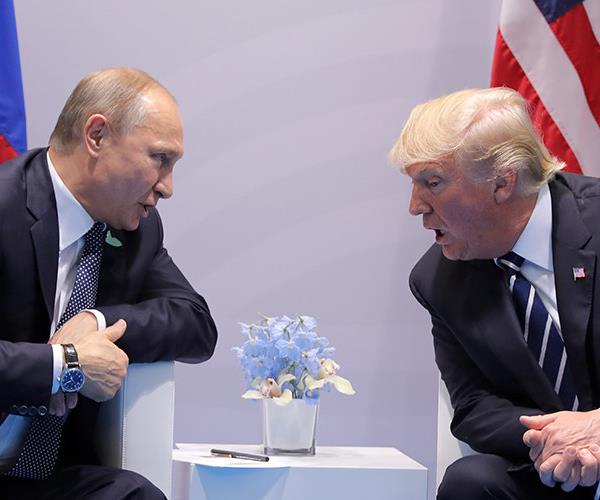 G20 Summit was much awaited globally, and mostly not because of its format and discussions, but because of the top level bilateral meetings regularly held on its sidelines. The most intriguing talks were the first meeting between Donald Trump and Vladimir Putin, that lasted over two hours, giving impression that the two leaders enjoy company of each other. However, agreements or significant declarations were not expected, while some breakthrough has been achieved. And the achievement doesn’t concern Russia-US bilateral ties, that remain at their low, but Syria issue, as countries seem to have finally found the common ground on the Syria matter.
G20 Summit was much awaited globally, and mostly not because of its format and discussions, but because of the top level bilateral meetings regularly held on its sidelines. The most intriguing talks were the first meeting between Donald Trump and Vladimir Putin, that lasted over two hours, giving impression that the two leaders enjoy company of each other. However, agreements or significant declarations were not expected, while some breakthrough has been achieved. And the achievement doesn’t concern Russia-US bilateral ties, that remain at their low, but Syria issue, as countries seem to have finally found the common ground on the Syria matter.
Both the US and Russian leaders claim the political victory after brokering a ceasefire in Syria for the first time since the breakout of the Syrian conflict. The unprecedented deal was not expected even by those who were optimistic regarding finding a solution to the Syrian conflict.
US President Donald Trump and his counterpart Vladimir Putin have agreed to a ceasefire in Southwest Syria starting from midday of Sunday, July 9, 2017, a day that follows their meeting at the G20 Summit in Hamburg, Germany.
A statement by Russian ministry of foreign affairs reveals that talks were held in Jordan one month ago, in June, aimed to reach the deal on the “de-escalation region” in southern Syria.
A memorandum of understanding to establish a de-escalation zone in the regions of Dara’a, Quneitra and Suweida was agreed upon Saturday July 8, 2017 between Russian, American and Jordanian military and security experts.
Russian Foreign Minister Sergei Lavrov who confirmed the news said that the deal will be effective as of midday Damascus time on July 9 which stipulates that a ceasefire will be in effect.
The deal provides that Russian troops will be deployed near the Jordanian-Syrian borders to replace the Iranian forces as Jordan has conservation regarding any militias or sectarian forces near its borders. This deployment is in interest of all the players, as it minimizes the dubious and undesirable Iranian presence in strategically important areas in Syria that threatens the Syrian conflict settlement and deteriorates regional stability and climate.
The Hamburg face-to-face meeting between both leaders allowed to discuss in details the agreement which also includes areas that have seen recent clashes between Syrian army forces on one hand and Israeli and rebel fighters in the Golan Heights on the other.
After Hamburg, what is Syria about? Is Washington still focusing on overthrowing the Syrian president Bashar Al Assad? Why did Putin stress that the shift in the American stand would help reach a final deal and settlement to the Syrian conflict peacefully? The answers would come simply from the trips made by some Jordanian officials to Moscow and Washington in addition to Syrian-Jordanian meetings at high security levels in the past few months which helped to culminate the deal, crowned by inking the agreement in Amman to help regain peace to the war-torn Syria.
Regardless of the Astana talks and the outcome of the negotiations between the representatives of the Syrian government and the opposition, the aspirations of the Syrians would come true if this deal gets into effect with sincerity from all concerned parties whether regional or international as any spillover of the Syrian crisis would this time be a deluge, affecting the whole Middle East, igniting further sectarian wars that would spread like fire in the bush.
This year Russia has been involved in talks with Turkey and Iran over the creating of 4 de-escalation zones in Syria to be policed by two surveillance centers: one in Jordan and the other in Turkey.
Though the monitoring process will be conducted mainly by Russian military police in coordination with Jordanian and American officers, the situation on the ground will be decided by the deployment of heavy artillery and troops. This justifies why the Syrian army and its allies started an expansive and comprehensive military campaign to regain many strategic positions before ceasefire gets into effect.
The tripartite agreement was also in line of contact agreed upon between the Syrian government forces and associated troops on one side and rebels on the other hand. The three signatory countries voiced their commitment to working on a political solution" based on UN-backed talks in Geneva and UN Security Council Resolution 2254.
Jordan seemed the focal point nowadays to the US administration and the Russian policy makers as the understanding was designed to reduce violence in an area of Syria near Jordan’s border, which is critical to Jordan’s security and Israeli stability. Jordanian King Abdullah II is a frequent guest both in Washington and Moscow these days, negotiating many regional issues with the two superpowers.
A warm welcome and support came directly from the UN on the reached promising agreement between the US and Russia, saying it would enable upcoming peace talks.
Much work lies ahead to ensure that constructive talks would yield to the positive results aspired to perform a sustainable ceasefire over the long term.
In order to avoid any whiplash, Russia, the USA and Jordan, should establish a more comprehensive plan to better control the de-escalation to proceed ahead with the three other de-escalation zones. This will help to avoid any consequential issues in the relationship between the three nations through direct and candid address of their concerns.
The meeting between Putin and Trump has set up a robust and comprehensive framework for future cooperation on Syria and for solving other Middle Eastern issues. Yet, this cannot be achieved without regional cooperation and coordination from the parties concerned, Turkey and Saudi Arabia in particular, as the peace process majorly depends not only on the situation on the ground, but on what is going on at the negotiating table and on the presence of the consent between the negotiating sides. At least on the possibility of its achievement, that mostly depends not only on the will of the sides, but also on the influence projected on them by their regional supporters.
Photo credit: Carlos Barria / Reuters
Astana meeting: 2 monitoring centers and a new Syrian Reconciliation Committee
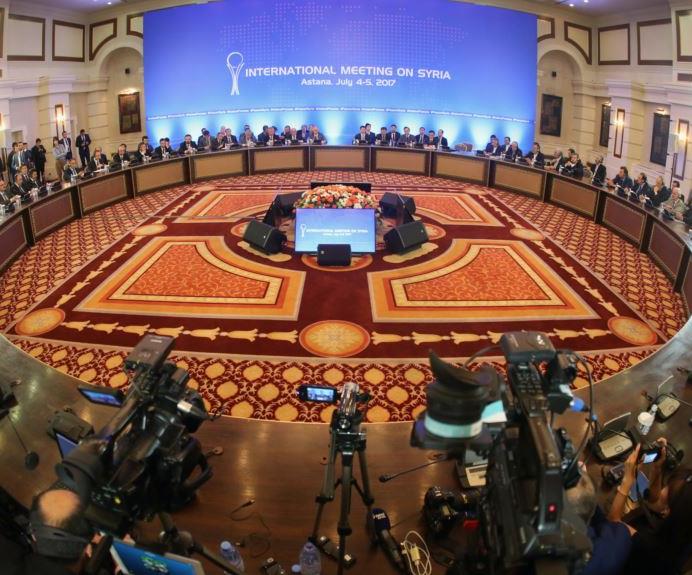 Diplomats from Russia, Iran, Turkey, and the United States have begun a fifth round of Syria peace talks in Astana with the Syrian government and representatives of some Syrian opposition groups to help Syria move to the next phase of defusing tension in all area to restore the country’s peace and stability as the country has been locked in a vicious conflict since early 2011
Diplomats from Russia, Iran, Turkey, and the United States have begun a fifth round of Syria peace talks in Astana with the Syrian government and representatives of some Syrian opposition groups to help Syria move to the next phase of defusing tension in all area to restore the country’s peace and stability as the country has been locked in a vicious conflict since early 2011
In the middle of continued violence in Syria, the 5th round of the Astana talks is set to convene to further discuss the establishment of the four proposed de-escalation zones in Syria in Idlib, Homs, Eastern Ghouta, and Daraa. This Astana meeting was preceded end of June by meeting by talks in Jordan involving U.S., Russian and Jordanian officials discussing a de-escalation zone in southwest Syria on the border with Jordan.
The July discussions will define the boundaries of the de-escalation zones, implement mechanisms by the three guarantor countries—Russia, Turkey and Iran— and will lead to the establishment of a new Syrian National Reconciliation Committee, that would split the other Syrian opposition groups.
The success of this round of talks depends on whether Russia succeeds this time in committing the parties involved in the Syrian conflict on the ground to the cease-fire as without a sustained cease-fire, no pathway to conflict de-escalation in Syria would be seen in the near future.
Sources to the 5th round suggest that monitoring over de-escalation in Syria be conducted from 2 monitoring centers — Jordanian and Russian-Turkish. In other words, the first will be Jordanian-Russia-US due to the meeting held in June between Jordanian, Russian and American security officials in Northern Jordan. This center will be in charge of the southern de-escalation zone. The second center will be in on the Turkish Syrian borders and it will be Russian-Turkish. These two monitoring centers would exchange information and suggest measures to prevent violations, such as military disengagement and any further military escalation on the borders with Jordan and Turkey to avoid any direct clash or skirmishes between the armies of these three countries which would deteriorate the situation to expand to the Israeli front.
As for the final declaration of the meeting, it will entail the formation of the National Reconciliation Committee of representatives of the Syrian authorities and local respected people, elder statesmen and opposition leaders. The commission would focus on all domestic issues, including security. It is expected that the committee would lead to the division of the Syrian opposition outside Syria.
Staffan de Mistura, the United Nations secretary-general's special envoy on Syria, who is taking part in the meetings of Astana, keeps calling on all parties to reach ceasefire and this would be a very good chance to bring peace to the war-torn country.
The meetings of Astana have paved the way for further deployment of Russian military to police the borders of de-escalation zones in Syria within two to three weeks after finalizing a deal with Turkey and Iran.
The details of the deal will be agreed upon by the three countries: Russia, Turkey and Iran in spite of some concerns about Iranian role in this process as voiced by the opposition.
In these talks there will be many Syrian opposition representatives
According to Kazakh Foreign Minister Kairat Abdrakhmanov, there will be nine representatives of Syria's armed opposition at the talks on July 4.
The meeting will be attended by Syrian envoy Bashar al-Jaafari, Iranian Deputy Foreign Minister Hoessein Jaberi Ansari, Turkish Deputy Foreign Minister Sedat Onal, and the acting U.S. assistant secretary of state for the Near East affairs bureau, Stuart Jones.
The fourth meeting in Astana in May was a breakthrough, as the three ceasefire guarantor states signed a memorandum on the establishment of four de-escalation zones in Syria without demarcation of these zones. Monitoring over the de-escalation zones is now the main topic on the agenda of the fifth meeting in the Kazakh capital.
The Astana meeting sounds to put an end to proxy wars in Syria as external military intervention—including arms and military equipment, training, air strikes, and even troops threaten to lengthen the conflict.
The Syrian Army, the Free Syrian Army (FSA), Kurdish armed groups that are part of the Syrian Democratic Forces (SDF), including the People's Protection Unit (YPG), are fighting Daesh and Al Qaeda fighters to control more territory in Syria. The Astana meeting would help define the lines that each of the fighting parties would reach in this conflict before a final political settlement is set inspire of Russian and Iranian support to the Syrian government. The main objective of such conferences including Astana and Geneva are to reach ceasefire and then to avoid any direct confrontation between neighboring countries armies on one hand and the Syrian army and its allies on the other.
The ongoing instability has enabled the expansion of powerful radical elements and extremists to increase their influence and pose hiking threats to countries neighboring Syria: Jordan, Lebanon, Turkey, Iraq and Israel.
The first round of Astana talks were held on January 23-24, 2017 brokered by Turkey, which backs the opposition, and Russia and Iran, which support Bashar al Assad.
Since the beginning of the war in Syria, more than 400,000 have been killed and more than 11 million displaced and fled the country to Jordan and Lebanon as well as Turkey seeking shelter.
Photo credit: AFP
Military action overshadows Syria diplomacy
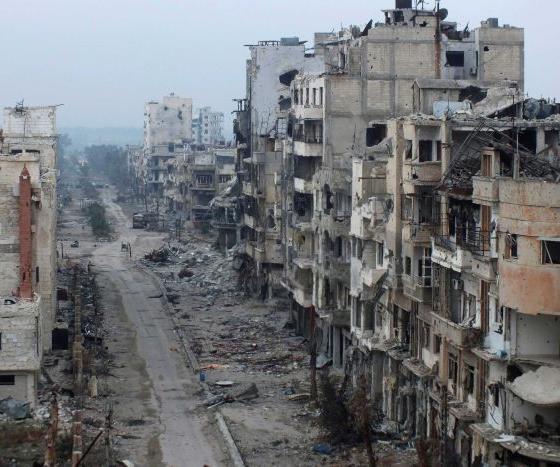 The next round of Syrian peace talks in the Kazakh capital Astana, scheduled for July 10, will coincide with a fresh round of UN-sponsored talks in Geneva. These diplomatic efforts come as the situation on the ground is becoming more tense, with Russia and the US close to direct confrontation in Syria.
The next round of Syrian peace talks in the Kazakh capital Astana, scheduled for July 10, will coincide with a fresh round of UN-sponsored talks in Geneva. These diplomatic efforts come as the situation on the ground is becoming more tense, with Russia and the US close to direct confrontation in Syria.
Russia, Iran and Turkey hope that a deal signed on May 4 to set up four safe zones in Syria will lead to a comprehensive cease-fire. UN envoy Staffan de Mistura has proposed three issues to be discussed in parallel: Constitutional amendments, general and presidential elections, and the type of government. Yet none of the parties concerned are interested in the proposal, and they are continuing military action to gain the upper hand in any future talks.
At the end of April, Russia, Turkey and Iran established a trilateral mechanism to observe and ensure full compliance with the proposed safe zones. As Daesh and Al-Qaeda lose territory in Syria, the government is gaining more, changing the political and military balance on the ground.
Decisive moments in Middle East history lie in the hands of three major powers: The US and its bloc, Russia and its bloc, and Turkey, which has strategic plans in Syria. With speedy efforts to liberate Mosul from Daesh, the main momentum will be in the belt extending from the Jordanian-Syrian-Iraqi borders in the southeast to Raqqa governorate, Daesh’s stronghold.
As the race to take over this area heats up, the outcome will determine the future of any independent Kurdish state there. The recent withdrawal of German forces from southeast Turkey to Jordan indicates that the Western alliance is trying to empty the region to make way for an independent Kurdish state. Ankara is striving to abort this project.
The deployment of Turkish special forces near the border with Syria a few days ago indicates that Ankara has a spat with the West over this region and its future. Meanwhile, Tehran’s recent mid-range missile strike against Daesh sites in Syria is a message that it will not allow any Kurdish state that encompasses part of Iran and thus endangers its national security.
So both Tehran and Ankara have a common enemy in the Kurds, and they will do their utmost to deprive them of an independent state between Iraq and Syria along Turkey’s borders. Meanwhile, the upcoming Astana meeting will discuss the four zones that will be free of armed conflict. This will pave the way for a settlement of the Syrian conflict, which has so far killed 400,000 people and displaced more than half the population.
The major difference between American and Russian efforts against terrorist groups is that Washington does not want to relinquish liberated areas to Damascus. Russia and the US are intensifying their competition in Syria despite their coordination over airspace to avoid clashes or accidents. Russia issued a warning after the recent US downing of a Syrian jet, calling it an aggression and a violation of the deal between Moscow and Washington.
Any development in southern Syria will be monitored by Israel, which will not allow terrorist groups near its border to be replaced by Iranian troops and Hezbollah fighters, as evidenced by its recent attacks against Syrian government forces near the Golan Heights. Military achievements will determine the composition of a future Syrian government.
Article published in Arab News: http://www.arabnews.com/node/1121631
Photo credit: Reuters/ Yazan Homsy
Russia beheading ISIS: PR or fake news?
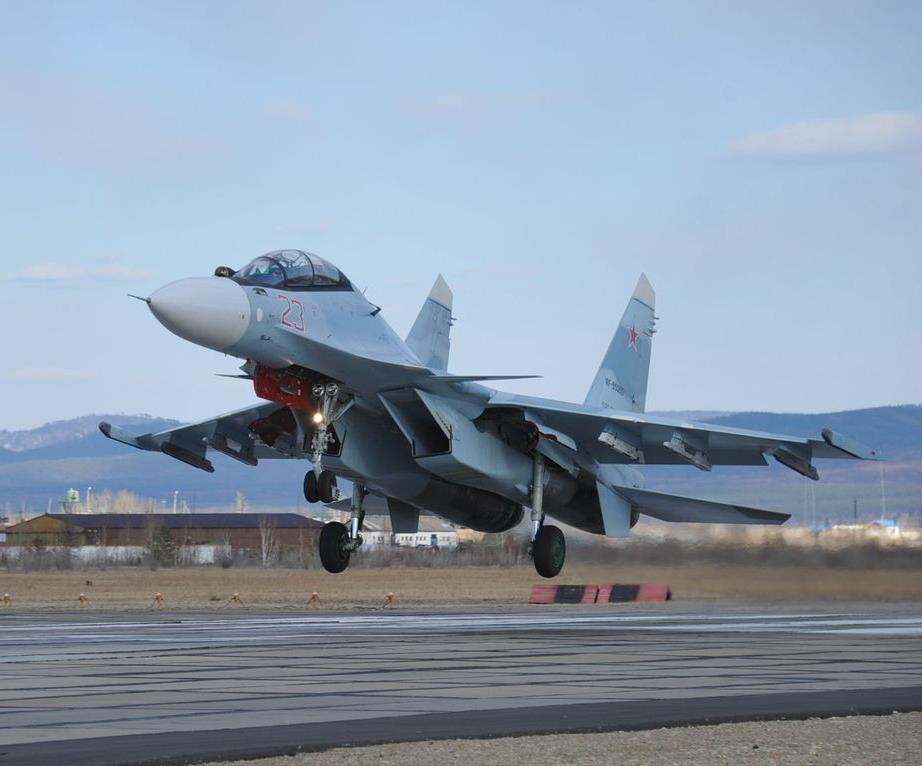 On the 16th of June Russian Ministry of Defense announced that according to preliminary data Russian air force liquidated the leader of ISIS Abu Bakr Al-Baghdadi on the 28th of May in the Southern suburbs of Raqqa. The message hit headlines worldwide and Russian politicians and several mainstream experts declared that they had no doubts in professionalism of Russian military and believed that no one else but them should eliminate the leader of the hydra.
On the 16th of June Russian Ministry of Defense announced that according to preliminary data Russian air force liquidated the leader of ISIS Abu Bakr Al-Baghdadi on the 28th of May in the Southern suburbs of Raqqa. The message hit headlines worldwide and Russian politicians and several mainstream experts declared that they had no doubts in professionalism of Russian military and believed that no one else but them should eliminate the leader of the hydra.
The author of this material has a great respect for Russian military who risk their lives following orders in Syria, and understands that counter terrorism is not a public affair but is still a crucial matter from political point of view. Hopefully, Russian Ministry of Defense will soon present a video evidence and comment its messages, so everybody, and those who have doubts in particular, could know for sure how “on the 28th of May SU-35 and SU-34 planes eliminated high-ranking leaders of the terrorist group who were members of so-called Military council of ISIS, 30 middle rank field commanders and up to 300 their guards”. Supposedly among them were “Raqqa’s emir Abu Al-Haji Al-Mysri, emir Ibrahim An-Naef akm-Hajj, who controlled the territory between Raqqa and As-Suhne, ISIS head of security Suleiman Al-Shauah" and probably Al-Baghdadi.
As this evidence is not published yet, allow me to enter the camp of those who have doubts and believe that this declaration should be treated as an element of information confrontation between Russia and the US, without even mentioning its evident targeting at internal electorate before the elections of 2018. And that is why.
Location
The declaration was made two weeks after the supposed strike and several days after Syrian television reported about the elimination of Al-Baghdadi in Raqqa (while in April Russian spetsnaz was already trying to catch fleeing Al-Baghdadi). And of course, it is unclear why the delay is so long - in 2016 when Russia and the US were divvying up the head of ISIS speaker and cheif of international operations Al-Adnani, the messages in both countries were aired with several hours in between (according to the information from Syria, Al-Adnani was bombed in his car as a result of internal feuds in ISIS).
In the web there is a video from “official” media of jihadists Amaq News Agency dated 28 May, where one can see the demolished buildings shown on the photo of Russian Ministry of Defense. This video demonstrates around 10 bloody corpses being buried in a single grave. All the resources documenting the strikes of both coalitions in Syria report strikes of Western coalition that caused 18 deaths (according, for instance, to the Syrian Observatory for Human Rights, which is not much loved in Russia but has a network of local informants).
The Western coalition also reports strikes near Raqqa on 27 and 28 May. However, Russian airstrike on Raqqa is still possible – some strikes were launched in this city from time to time.
But regardless who made the strike… Jihadi resources (“official” and partisan ones) always immediately inform about a death of an emir. Neither the author, nor experts from the US and the Middle East familiar to him did not note any messages about deaths of such high-ranking officials in the end of May.
Who are the leaders?
It is noticeable that such large gathering of militants (and even of the military council) as Russian military ministry reports, took place several dozen kilometers from the combat line with Kurdish-Arab alliance “Syrian Democracy Forces”. It is unclear why the meetings should be carried out in the buildings under the heavy bombardments of both coalitions, but not underground, while ISIS intensively uses underground communication during combat in urban areas and in desert villages.
Firstly, there is information (from intercepted Islamists’ documents) that ISIS started preparing for loosing big cities, Mosul in particular, back in 2015. Foreseeing these events they have restructured their management hierarchy – Shoura Council, military council, security and reconnaissance council were evacuated into the network of underground shelters on the Syrian-Iraqi border, and Al-Adnani killed in 2016 became the head of a parallel managing structure.
Secondly, the military council was relatively small even in the better times for ISIS in order to protect it from outsiders and agents of special services, so there is even no available information on its several members (Shoura council counts approximately 9-11 persons). Hypothetically, the strikes that demolished several buildings (according to the photos presented by Russian defense ministry) would have eliminated the whole military leadership, not only Raqqa’s emir, who could be in fact responsible for the defense of the province in case of death of certain directions’ commanders. By the way, the head of security service (Amniyat) does not have to be a member of military council.
Thirdly, the names of the presumably eliminated leaders are not known for researchers, though is is not an argument. I shall clarify that.
For a long time Raqqa’s emir was Abu Luqman (Ali Moussa al-Hawikh) who was freed from prison in 2011 by Syrian government under an amnesty. He presumably had conflict with speaker Al-Adnani (and eliminated him) and was considered a possible successor to Al-Baghdadi. According to certain information, Abu Lukman was still in charge as the province’s emir in 2015 (though the media in 2015 claimed that ISIS had concealed his death). During the assassination of Al-Adnani (30 August 2016) he was already an ex-governor, though he was still alive. It is still unclear who replaced him on his post. However, as we have mentioned before, the death of emir of the central province in May 2017 was unlikely to remain unnoticed. For example, the Kurds eliminated far less significant emir Abu Khattab al-Tunisi and seven jihadists near Raqqa in 11 June and their photos immediately appeared in the “special resources”. On the 26th of March Tabqa’s (Raqqa province) emir, jihadist from Germany, was eliminated and on the 21st of March ex Nusra’s emir in Raqqa Abo Al-Abbas was killed in Idlib. Both deaths immediately became public.
The only publicly available information about the emir who controlled the region between Raqqa and As-Suhne is that opposition Syrian journalists claim that Ibrahim An-Naef Al-Hajj is a real As-Suhne local, but he was killed by an air strike back on the 24th of May in the age of 60 and had no affiliation to ISIS.
Regarding the head of Amnyat, a single name is repeated in the jihadists’ documents – “Dr. Samir” (according to some sources Abu Ali, to others – Abu Sulayman al-Faransi (from France), to third – Abu Ahmed of Belgian-Moroccan origin). It is hard to say, whether it is a single person or several ones. For instance, commander Abdurrahman Mustafa Al-Kaduli who was close to Bahdadi and was killed in 2016, had around seven names.
Thus, yes, Russian strike on the designated area is theoretically possible, but it is extremely difficult to check whether the bombardment really took place as well as to clarify the numbers and names of killed leaders. Within the framework of information warfare with the US it is a rather successful move that was mentioned by all media worldwide and provoked a desirable information noise. However, there is one nuance: if Western official institutions and media may spread evident disinformation and are still believed, in case with Russia it works differently and most often has a negative impact.
What if everybody is really killed?
Islamic state is a military quasi state with strict hierarchy in every sphere. During its existence its leadership has greatly changed, and even though a loss of a charismatic leader inflicts some damage to the organization, ISIS has learnt how to survive and manages to do it rather successfully.
Former members of Saddam Husein’s army and special services together with foreign “specialists” were replaced by a new generation. For instance, the place of Al-Adnani was taken by Abu Sufyan al-Sulami who is a well-known preacher from Bahrain with good connections in the Arab world. It were Al-Adnani and his successor who made the landmark declarations of 2016 about the continuation of fight after the “loss of Raqqa and Mosul”, probable return to the “initial existence” in these countries (underground on the Iraqi-Syrian border) and expansion of the “caliphate” to other countries of the world.
The Islamic State as its predecessor Al Qaeda has adapted to the loss of leaders, its units can act rather autonomously. As it happens now in Iraq were sabotages and suicide bombings occur even in the liberated areas. Or in Iran - in March 2017 the official resources of ISIS called the existing cells to form their own Shoura council and to elect a “minister of war” due to their autonomous existence (though according to ISIS administrative territorial the “Perisan lands” are mainly included in Iraqi “Wilayat Diyal” (does not overlap with the official borders of Diyala province)).
So, even the unproven death of the leaders does not bear much influence on the combat readiness of ISIS units while they are able to restructure in the conditions of ethnic and confessional misbalance particularly if their operatives and preachers are still active.
However, there is a weak point in ISIS ideology – it is the “caliph”. Hypothetically, the leader of Shoura council Abu Arkan Al-Amiri, a truly mythical person (no one knows where he is from, how he looks like, etc.), can take “caliph’s” place if he is killed or arrested, and Shoura council will elect its new leader.
ISIS propaganda devoted much attention to the personality of Al-Baghdadi, his education in the Islamic law and his “chosenness” (he is presumably a member of Quraysh tribe to which prophet Mohammed belonged, etc.) and never mentioned the possibility of having a successor. So, in case his death is proven and if the Islamist propaganda is not ready for it, “caliphate” may fall into disarray as it will be unclear to which “caliph” the whole “Muslim Umma” should pledge allegiance. The Islamic state should understand that.
Photo: RIA News/Evgeniy Epanchincev
The future of the GCC ignited brouhaha in the region between the US and Russia
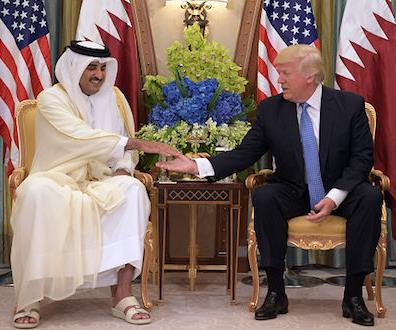 Following the Pentagon’s June 14, 2017 statement on a military deal regarding a squadron of 35 F-15 jets delivery to Doha, expectations are ramping up for a cluster of tranquility in the Gulf diplomatic mess which could have paved the way for a military confrontation between four countries against Qatar, as they blame Doha for funding and supporting terrorism in the region.
Following the Pentagon’s June 14, 2017 statement on a military deal regarding a squadron of 35 F-15 jets delivery to Doha, expectations are ramping up for a cluster of tranquility in the Gulf diplomatic mess which could have paved the way for a military confrontation between four countries against Qatar, as they blame Doha for funding and supporting terrorism in the region.
The total amount of the deal is not just US$ 12 billion – the price of the announced 36 jets, as additional 36 jets are to be agreed upon later on – making the deal worth more than US$24 billion.
Jets manufacturer Boeing in a statement on its website said: “This is a very important deal for preserving the production of this sort of planes and creating 60,000 job opportunities in 42 American states.” This means that the money acquired through the Qatar deal helps Americans proceed with their business as the production of the jets was at risk due to lack of demand.
The American president has fuelled the threats against Doha by his strongly-worded warning, where he accused Qatar of being a “funder of terrorism… at a very high level,” calling on Qatari government to “stop immediately supporting terrorism”.
Shortly after the deal was closed, the President Trump’s tweets of a few days earlier in which he said that “Qatar has a history of backing terrorism at a very high level, and must be punished” as well as other in which he insisted that “the isolation of Qatar is the beginning of the end for terrorism”, the tweets have completely disappeared from his Twitter account. Moreover, they were succeeded by other statements praising Qatar as a strong US ally, while stressing that the warplanes deal represents a big step towards ‘consolidating’ strategic and security cooperation between the two countries.
Earlier, US president Trump has expressed Washington’s support for Bahraini, Egyptian, Saudi and Emirati anti-Qatar coalition. This has been made clear during recent White House press conference when he announced that along with “Secretary of State Rex Tillerson, our great generals, and military people”, he decided [that] “the time has come to call on Qatar to end its funding”.
The already complex Gulf crisis was further complicated with the subsequent US fighter jets deal with Qatar and the ensuing joint US-Qatari military exercise that have together sent counter-signals to the four-state alliance, effectively contradicting the US Secretary of State’s conciliatory request delivered in a calming tone to the countries directly involved in the rift.
Though the American Secretary of State is preparing a meeting for the Saudi, Qatari and Emirati officials in Washington, Trump seemed angry with the Qatari officials, mainly the country’s Emir Sheikh Tamim, for turning down an invitation to visit the US, under suspicion that the invitation was a trap similar to the one his grandfather fell into, when while on a visit in Egypt and the UAE, his son Hamad carried a coup that dethroned him.
Was then the American Qatari multi-billion jet deal a placebo or a relaxant to the belligerency against Doha from its neighbors?
As the deal is still to be considered by the Americans and their officers since the jets won’t be instantly handed over to Qatar, the deal is said to be absorption of the American anger as the US has about 10,000 troops in Al Udaid base in Doha, which would act as a springboard spearheading any coup schemata.
With the UAE ambassador to Washington statements that there would be no military intervention in Doha, this has double meaning from diplomatic and political viewpoints as history has proved it a long time ago. When diplomats speak about something, the opposite takes place.
It was evident from the outset of this crisis that it would get increasingly serious amidst expectations for further escalation, especially after a number of GCC officials started paying visits to the UK and Russia. The latter being under radar to gauge whether Russia would side with the four-states’ alliance or Doha, due to the huge economic benefits it would gain through yet unannounced agreements with Qatar.
It is speculated that Russia is considering taking control over the world natural gas industry. Once Russia wins over Qatar, as it has already done with Iran, more than 80 per cent of world gas production would be at its disposal. Was this recent rapprochement between Moscow and Doha the real reason for the uproar between Doha and its Arab brethren rather than ‘funding and supporting terrorism’? Will this crisis set the Middle East region partially or wholly ablaze?
The Qataris are now playing politics, as far as the F-15 deal is concerned. The deal has helped the American administration secure an additional US$ 12 billion injection into its military industry. It remains to be seen whether it will help Doha to disentangle itself from the brotherly ambush.
These are all chess pieces moved around adeptly by the superpowers, at the suitable time, especially after the 55 Arab and Islamic states alliance meet up in Riyadh Summit last month. As to who will make the check mate move to end the game is anybody’s guess at this point.
Article published in Geostrategic Media: http://geostrategicmedia.com/2017/06/the-future-of-the-gcc-ignited-brouhaha-in-the-region-between-the-us-and-russia/
Photo credit: AFP PHOTO / MANDEL NGAN /Getty Images
How Moscow-Riyadh rapport fits into the Mideast scene
 The recent visit to Moscow of Mohammed bin Salman, the deputy crown prince and defense minister of Saudi Arabia, didn't make many headlines. However, given the current developments in the Gulf with Qatar, the visit has acquired new significance.
The recent visit to Moscow of Mohammed bin Salman, the deputy crown prince and defense minister of Saudi Arabia, didn't make many headlines. However, given the current developments in the Gulf with Qatar, the visit has acquired new significance.
Until recently, "America's hand" was seen behind virtually all events in the Middle East. Now that Moscow has raised its regional profile, “Russia's hand" is seen here and there: No sooner had the Qatar crisis erupted June 5 than some suggested the prince had discussed with the Kremlin the Saudis’ decision to shun Qatar — which is very unlikely.
President Vladimir Putin gave his guest a hearty welcome when the prince arrived May 30. Their public statements struck a particularly friendly note, as is usually the case at the meetings of high-ranking officials. Putin praised their rapidly expanding ties, stressing that since early 2017, economic cooperation has increased by 130%, according to state-owned Tass news agency.
As he touched on political and military contacts, Putin reminded journalists that the two states are searching for ways to resolve complicated situations, “particularly in Syria,” and that “energy agreements are very important for our countries.”
Salman also stressed energy cooperation with Russia, saying, “The main point is that we are building a solid foundation for stabilizing the oil market and energy prices and this is creating good opportunities for building our strategic future.” He also described the current stage in the bilateral relations as “one of the best.”
Indeed, today’s relationship contrasts sharply with the once virtually nonexistent economic ties, which were inhibited in the 1990s and 2000s. Both countries’ economies are driven largely by oil production and there wasn’t much opportunity for collaboration at that time.
Also, Russian Muslims hold the Saudi royal house in high esteem. The renewed emphasis on religion in Russia makes the reverence particularly significant. It is noteworthy that authorities from Russia's Muslim-majority regions pay regular visits to Saudi Arabia and meet with the country’s top officials in a bid to grow their stature in Russia’s Muslim community.
Yet the resulting state-to-state interactions have been somewhat bizarre in recent years. The friendly relations are underpinned by numerous agreements, but few of those have been implemented. Both countries aim to build trust, which they deem absolutely necessary. Moscow and Riyadh have had different perspectives on the international landscape and until recently, they found themselves on opposite sides of most regional issues.
However, the situation has changed, as life is teaching the two countries to be clear eyed about current developments. While Russia and Saudi Arabia continue to maintain opposing views on the Syrian peace process and Iran’s regional role, they have managed to find some common ground. Moscow toned down its rhetoric about Yemen and Bahrain, and it promotes cordial relations with Saudi-allied Egypt and cooperation with the kingdom on the ruptured Libyan government. Finally, both Russia and Saudi Arabia have faced similar economic problems caused by the oil price plunge, which prepared the ground for their rapprochement and a potentially promising “oil alliance.”
Notwithstanding their contrasting approaches to regional matters, Russia’s military campaign in Syria won Riyadh’s respect. Thus, the kingdom started to view Moscow in some ways as a potential alternative to Washington, which had proved unreliable under the administration of President Barack Obama.
In this context, the frequent encounters of the Saudi prince with Putin have special importance.
Even though Syria was officially the key item on the meeting’s agenda, no formal arrangements were finalized. What is more important, though, was the two sides refrained from rebuking each other.
Salman, according to some informed sources in Moscow who spoke with Al-Monitor, was supposed to spend far more time in Russia’s capital. Today, however, it is clear that the dramatic developments brewing in the Gulf regarding Qatar most likely led him to shorten his stay.
As the meeting failed to produce any serious deal, it allows for some speculation about the prince’s real agenda regarding Moscow. It seems quite evident that Salman intentionally arrived in Moscow soon after US President Donald Trump’s trip to the Saudi kingdom May 20-21. Even the red carpet welcome the Saudis gave Trump couldn’t close the credibility gap between them. Riyadh doesn’t completely trust Washington. Given the uncertain future of Trump’s presidency and his still-vague Middle Eastern strategy, putting all of the kingdom’s eggs into one basket would be an ill-conceived step, to say the least.
That’s where Egypt comes into this speculative scenario.
Some experts in Moscow assume the Egyptian government needs Russia’s weapons but is unable to pay the bill. However, Riyadh, capable of backing Egypt, is becoming involved in establishing security zones in Syria, which could emerge as a way to constrain Iran’s ambitions for control in Syria. Yet Saudi Arabia, a militarily weak state mired in the Yemeni war, would rather entrust a reliable ally, presumably Egypt, with a peacekeeping role in the security zones. This would give Egypt a chance to strengthen its regional stature and bolster popular confidence in its government, which is grappling with severe economic problems.
This interpretation fits current developments in the Gulf.
Russia is on good terms with Qatar and Iran — Saudi Arabia’s sworn enemy. Qatar’s alleged ties to terrorism and Iran are the reasons it is being ostracized in the Gulf. Judging by statements from the Russian Foreign Ministry, Moscow is not willing to interfere in the crisis engulfing Qatar — which suits Riyadh but that in no way means Russia’s support for Iran is waning. What this could mean is that Russia wants to see Saudi Arabia as a leading representative of Arab Gulf monarchies’ interests — in which case Russia must satisfy the Saudis’ legitimate interests in the region.
Article published in Al Monitor: http://www.al-monitor.com/pulse/originals/2017/06/russia-saudi-arabia-gcc-alliances-qatar-middle-east.html
Photo credit: REUTERS/Pavel Golovkin
Applying the ‘Bosnian model’ to Syria’s crisis
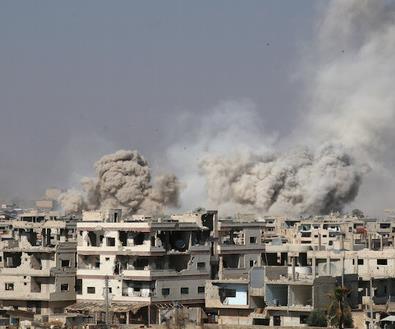 As Russia and the United States are holding back-channel talks over de-escalation zones in southern Syria, there’s a larger question of whether the two countries might broker an ultimate peace deal for the Syrian civil war.
As Russia and the United States are holding back-channel talks over de-escalation zones in southern Syria, there’s a larger question of whether the two countries might broker an ultimate peace deal for the Syrian civil war.
Officially, Moscow is relying on the de-escalation zones to be in effect for an indefinite term and considers them instrumental to settling the conflict. However, agreements on the “soft decentralization” of Syria reached in Astana, Kazakhstan, tend to prompt questions rather than give answers.
It’s not clear yet how those violating the cease-fire will be punished or who will become the peacekeepers in these so-called security zones. Not many in the opposition even understand the term “de-escalation zone,” which does not exclude military operations. Moreover, according to Al-Monitor sources in the Free Syrian Army (FSA), the militants fear that the agreement will play into the hands of the regime, which aims to divide and “domesticate” the opposition, according to the FSA sources. Toward that end, the opposition fears it is to be sent to fight the radical Hayyat Tahrir al-Sham (HTS) and the Islamic State (IS).
The cease-fire agreement is likely to be violated. Nevertheless, if Moscow is set on keeping it, the prospect of a political settlement will become much more realistic, especially after IS is cleared out of eastern Syria. Still, the cease-fire is just one step on the long road toward ending the civil war and isn’t considered a breakthrough.
It’s obvious that, despite its seeming adherence to United Nations Resolution 2254, the Syrian regime and Iranians will hamper any significant reforms that could reduce their influence. Here, Moscow will have to solve a very complicated problem: how to make its allies compromise without giving up on Syrian President Bashar al-Assad — at least not right away. In view of the Russian presidential elections scheduled for March, even the Russian public would perceive Assad’s ouster as a Kremlin failure.
However, as they say, where there is a will, there is a way. There’s a view among those Russian experts who take an unbiased look at the Syrian situation — unlike those who indulge in propaganda — that the most feasible settlement scenario is something along the lines of the famous Dayton Agreement for peace in Bosnia and Herzegovina (1995). Above all it would allow Syria to preserve its army and integrate the government and the opposition military formations into new armed forces. Numerous discussions with the Syrian opposition in Moscow prove that, in essence, their suggestions concerning the settlement boil down to the Bosnian model.
The Dayton Agreement provided for two administrative units: the Federation of Bosnia and Herzegovina, and the Serb Republic (Republika Srpska). The separation boundaries did not correspond to the front line as of the moment of cease-fire. Despite criticism that it would weaken the central power, the Dayton Agreement proved key to settling the conflict: The sides committed themselves to ensuring security in their territories and preserving the civil law-enforcement bodies, and pledged to send all foreigners, including advisers and volunteers, out of the country.
In Bosnia, military formations were integrated in two stages: first Muslims and Croats created joint military forces, and only then were they joined by Serbs. Eventually, by 2006, three armies had merged into one with three infantry brigades at its core and every brigade had a Muslim, Croatian and Serb battalion.
As for a Syrian version of the Dayton Agreement, which would integrate military formations into one army not exceeding 150,000 troops, the integration should be implemented in several stages. For instance, first, groups of militants and opposition would unite into corps to consolidate the maximum of armed people, then these corps are to be reduced to the necessary numbers. The redundant fighters could be transferred to civilian positions to help restore the destroyed infrastructure. It seems expedient that one corps be created at the Turkish buffer zone. The Bosnian plan of building the national army could be used to integrate the Southern Front rebel alliance and the Syrian Democratic Forces (SDF, which includes the Kurdish People's Protection Units, or YPG), thus contributing to ethnic and confessional diversity rather than sectarian division.
However, right after the cease-fire it would also be reasonable to create a special military council of 20 to 30 people. Under international supervision, it could become a platform for talks and negotiations between the commanders of the regime and their counterparts from the opposition.
This military council could also contribute to political reform, as it could be used as both a watchdog authority and “bench strength” for the key defense and law-enforcement positions. For example, the post of the defense minister could go to the regime candidate, while the chief of general staff could become someone from the opposition. That would balance the situation. The question about the nature of the reform — should it be military or political — is to be discussed by thinkers, but there are at least two arguments in favor of the first priority being a military council.
First, in today's Syria, security is a critical issue. It is complicated by confrontation with the radicals’ troops, which will likely try to wreck the agreement by any means. It is also compounded by the necessity of ensuring the security of the population in the opposition-controlled territories relying on local councils.
Second, the agendas for the Astana and Geneva meetings prove that it will take years to agree on political platforms, while the issues of cease-fire, amnesty and forming delegations can be dealt with today.
Integrating the regime and opposition armed forces will only be viable after a series of political reforms. This two-year process must be put in sync with forming the transitional government. Otherwise, we may see another case of the Tajikistan scenario of 1997, when President Emomali Rahmon kept the office while the army and the opposition failed to unite.
Another problem to be discussed is how to integrate the US-supported Kurdish YPG groups, which demonstrate a strong separatist sentiment and are not to be easily disarmed in the presence of the American contingent in Syrian Kurdistan. One could regard the formation of another corps, which should by all means include various formations of the SDF, where at least 23,000 are Arabs. The Arab participation should be real and not for show, and the YPG and Kurdistan Workers Party (PKK) symbols should be abandoned.
Therefore, Moscow believes that after the liberation of Raqqa and Deir ez-Zor from IS, Americans are unlikely to give up on their presence in northern Syria. However, Moscow can benefit from the US presence if the formation of the united military forces is supervised by the four countries: Russia (Syria's west), Turkey (the northwest), the United States (the northeast) and Jordan (the south). Largely, these steps would reduce Iran’s influence, which cannot be allowed on the Syrian-Iraqi border, where IS is most likely to return.
It’s not news that in Syria, trust is in short supply. Who can guarantee that the militants will not go on the offensive? Who can guarantee the opposition won’t end up in prison as soon as they disarm? The credibility issues are connected with the pressure on Damascus, and in the Astana format, Russia may show readiness to make compromises. However, there is a big question of how to pull Assad outside the settlement framework. The Kremlin has not yet found the answer, or maybe it has not been looking hard enough.
Article published in Al Monitor: http://www.al-monitor.com/pulse/originals/2017/06/us-russia-syria-peace-deal-bosnia-safe-zones-iraq-turkey.html
Photo credit: REUTERS/Alaa Al-Faqir







